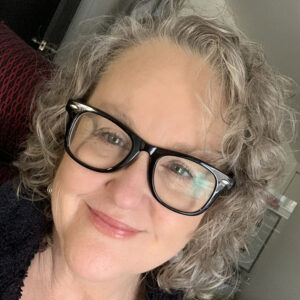Acute Care Telehealth Expands Access in Community Hospitals
Telemedicine technology connects community hospitals with specialized experts, closing gaps in knowledge and keeping care local.
// By Jane Weber Brubaker //
 When patients in a rural community get sick and need access to intensive care or specialized care, the typical small community hospital — if there is one — doesn’t have experts on-site to manage their care needs — and transferring them to a large tertiary care center may not be an option if no beds are available.
When patients in a rural community get sick and need access to intensive care or specialized care, the typical small community hospital — if there is one — doesn’t have experts on-site to manage their care needs — and transferring them to a large tertiary care center may not be an option if no beds are available.
In these instances, acute care telehealth is helping patients receive the right care without having to leave their local community, a benefit to the patient, their family, the local hospital, and the tertiary care center.

Teresa Rincon, RN, PhD, FCCM, assistant professor at the University of Massachusetts Medical School, Graduate School of Nursing, and senior telehealth consultant with Blue Cirrus Consulting
In a JAMA article, “Paying for Telemedicine in Smaller Rural Hospitals: Extending the Technology to Those Who Benefit Most,” the authors state, “By bringing a consulting specialist virtually to the patient’s bedside, telemedicine may enable patients to receive the care they need closer to home. In doing so, smaller hospitals struggling to stay open may be able to retain more patients and improve their financial footing.” (JAMA Viewpoint, 8/27/21).
Teresa Rincon, RN, PhD, CCRN-K, FCCM, is assistant professor at the University of Massachusetts Medical School Graduate School of Nursing, and senior telehealth consultant with Blue Cirrus Consulting. “It’s not that they don’t practice excellent nursing and medicine at these community hospitals, rural hospitals, and other places,” she says. “It’s just that they may not have experienced the types of things that a particular patient is demonstrating in their disease state or syndrome. We can provide those resources over telecommunication technologies in small rural community-based places. That’s all they need.”
Here, we explore some of the ways acute care telehealth is expanding access to care, improving the finances of struggling hospitals, and relieving the pressure health systems are experiencing due to persistent staffing shortages.
Lifeline for Struggling Hospitals

Harsha Gopinath, corporate director of Telemedicine at Prime Healthcare
Headquartered in Ontario, California, Prime Healthcare (Prime), is a for-profit health system operating 45 hospitals in 14 states. Through its affiliated foundation, Prime also operates 14 not-for-profit community-based hospitals. Its mission is “To save and improve hospitals so that they can deliver compassionate, quality care to patients and better healthcare for communities.”
Before Prime acquired them, these hospitals were at risk of closing. American Healthcare Leader (AHL) stated, “An emphasis on lower costs and finding efficiencies helps Prime put itself in a position to invest in and save failing hospitals.” (AHL, 6/13/22) In 2021, the Lown Institute Hospitals Index ranked five Prime hospitals among the 20 most efficient in the nation.
Prime partners with Equum, a provider of telehealth-enabled acute care teams, to provide care locally and enable small hospitals to fully leverage their assets.
“One of the rural hospitals had an empty ICU,” says Harsha Gopinath, corporate director of telemedicine at Prime. “They’re very far north of Amarillo and there’s no intensivist around there. That was really the first place we got working with Equum.”
With Equum providing access to intensivists virtually, the hospital was able to take in more sick patients in the community without having to transfer them to the tertiary care center in Amarillo.
“Once that ICU opened up, it was bustling with patients they were able to admit and manage the work with the hospitalist team that’s on-site there,” says Gopinath.

Karsten Russell-Wood, chief marketing officer at Equum
“Our team of intensivists are the physicians on staff at the right time,” says Karsten Russell-Wood, Equum’s chief marketing officer. He adds, “All of our physicians and nurses are licensed and credentialed in the hospital that they’re working in.”
In addition to Tele-Critical Care, Equum’s services include Tele-ED, Tele-Transfer, Virtual Nursing, Virtual Sitter, and Telehealth Maturity Consulting.
Gopinath explains that the telemedicine model allows multiple sites of care to buy the incremental part of a physician instead of the fully loaded cost. “If I spread one FTE intensivist across a number of rural sites where he sees patients, he’s doing the same work he would have done had he been on-site,” he says.
Equum also supports Prime with after-hours and weekend coverage virtually in communities where there aren’t enough providers to operate 24/7. “That’s another way we use them is to supplement the current team’s coverage — that helps the local docs get rest,” says Gopinath.
Connecting Novice Nurses with Critical Care Experts Virtually
Teresa Rincon began her career at a large health system in California as a critical care nurse. “When I first started in the ICU, probably about 70 percent of the nurses that I was working with had their advanced certification in critical care, and probably 90 percent were experienced critical care nurses, so there was no shortage if I needed to ask an expert a question,” she says.
She contrasts this with what she often saw in community hospitals. “We would find some of these community hospitals, and especially the rural hospitals, the most experienced nurse in the ICU had one year of experience — and it takes about three to five years to move from novice to expert,” she says.
“In those three to five years, you need to experience high-acuity patients to become an expert critical care nurse. In these small community-based rural health systems, they used to transfer out their highest-acuity patients, so they never got those experiences.”
The pressure on a novice nurse in a rural setting who is in over his or her head and lacks the support of a more experienced nurse is potentially devastating, both for the patient and the nurse.
That need for expertise and guidance can be met through telemedicine. “We were able to provide that to them, which helps that nurse grow,” says Rincon. “It also reduces that nurse’s potential for having a catastrophic mistake, a career-ending and, unfortunately, sometimes a life-ending mistake, not just the life of the patient, but these nurses. There’s a high rate of suicide when a nurse has a catastrophic mistake.”
Rincon emphasizes the value of a remote physician actually seeing the patient on camera when things don’t look right.
A nurse in the California health system’s tele-ICU was instrumental in saving the life of a woman who had just given birth and was hemorrhaging. “She went into the room with a camera because she could see the patient’s heart rate was really high,” Rincon says. “There’s literally towels stuffed between the women’s legs because she’s bleeding out.”
The nurse had an intensivist in the tele-ICU assess the patient, and they were able to get her to a trauma hospital in time to save her life. “This woman went home to take care of her baby,” says Rincon.
The Impact of Reducing Nursing Turnover
The turnover rate for nurses was more than 25 percent in 2022. Getting that rate lower has financial benefits. “What some of the studies are showing right now is for every percentage point that you can reduce turnover, you’re saving your organization about $262,000,” Rincon says. “So, this is huge, from an ROI perspective, to keep those nurses there.”
The “Synergy Model” emphasizes the importance of alignment between patient needs and nurse competencies in achieving optimal outcomes and nurse satisfaction, according to the American Association of Critical Care Nurses.
“When you have a whole team of novice nurses, you’re set up to have less-quality outcomes than if you had experienced nurses,” Rincon says. “So, using a virtual nurse service can get you that skill mix.”
Rincon’s organization, Blue Cirrus Consulting, works with Equum to design a comprehensive tele-RN offering, described in a September 2022 press release by Equum founder and CEO Corey Scurlock as “a dynamic solution that supports quality, efficiency, patient flow, and nurse and patient satisfaction.”
Jane Weber Brubaker is executive editor of Plain-English Health Care, a division of Plain-English Media. She directs editorial content for eHealthcare Strategy & Trends and Strategic Health Care Marketing, and is past chair of the eHealthcare Leadership Awards. Email her at jane@plainenglishmedia.com.
